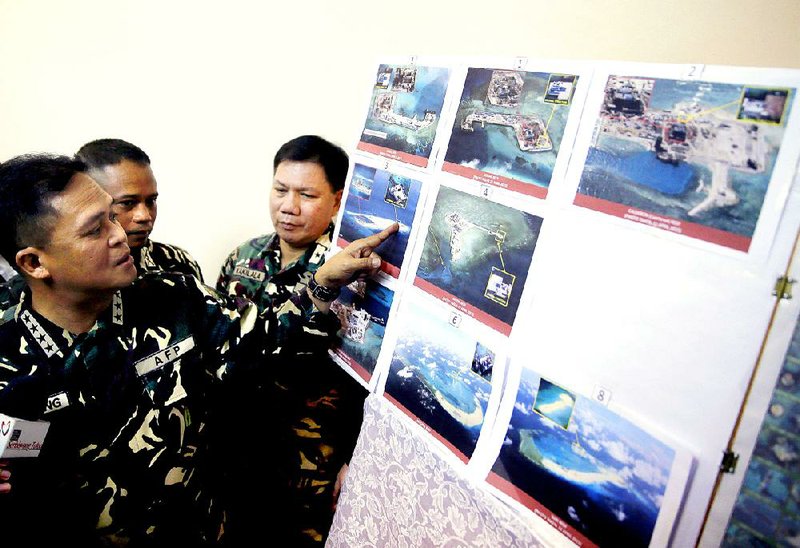MANILA, Philippines -- More than 11,500 American and Filipino military personnel launched one of their largest annual combat exercises Monday amid growing alarm over land reclamation by China in disputed South China Sea territories.
Philippine military officials said the maneuvers, which involve more than 90 aircraft and ships, were not directed at China.
More than 120 Philippine and U.S. Marines will be deployed from an amphibious attack vessel today to simulate the re-taking of an island occupied by enemy forces in northwestern Zambales province, Filipino officials said. There will be live-fire and search-and-rescue drills as well as civic work in other areas.
China seized control of a shoal off Zambales after a standoff with Philippine ships three years ago. The Philippines challenged the validity of China's vast territorial claims before an international arbitration tribunal in 2013, straining ties.
Shortly before overseeing the start of the military exercises, Philippine military chief Gen. Gregorio Pio Catapang Jr. held a news conference to release surveillance photos showing Chinese reclamation of eight previously submerged reefs in the disputed Spratly Islands, saying Beijing's actions increase the risk of an accidental confrontation.
"We have compelling reasons to raise our voice to tell the whole world the adverse effects of China's aggressiveness that has created tensions not only among the countries who have overlapping claims in the area," Catapang said.
The U.S. has expressed concern over China's actions. Sen. John McCain, R-Ariz., and three other top-ranking senators overseeing U.S. defense and foreign policy have called for a comprehensive strategy to deal with China's territorial moves, warning that American interests and those of its allies stand at considerable risk.
Adm. Samuel Locklear, the commander of U.S. forces in the Pacific, warned last week that the artificial islands could serve as resupply bases for China's large fleet of maritime security vessels. China eventually could deploy missiles and radar on them, providing a platform for enforcing an air defense identification zone similar to one it declared over disputed Japanese-held islands in the East China Sea in 2013.
The reclamation has destroyed large swaths of coral reefs, Catapang said, adding that Filipino fishermen have been driven away from the construction sites.
Catapang said some of the reclamation projects were near a Philippine-occupied island it calls Pag-asa and Second Thomas Shoal, raising the possibility that Chinese military patrols could cut off Manila's access to those areas.
Philippine government agencies were meeting to determine how to respond to the situation, Catapang said, adding that Manila wants a peaceful resolution based on international laws.
Chinese officials have defended the land reclamation by saying it is Beijing's territory and that the buildings and infrastructure are for public service use and to support fishermen.
But the Philippine military has said the scale of the reclamation and the emergence of runway-like facilities raise the possibility they are for military use to reinforce China's territorial claims.
The Spratly islands and the reefs and atolls where most of the Chinese land reclamation has been detected has long been contested by China, the Philippines, Taiwan, Malaysia, Vietnam and Brunei. In addition to possible oil and natural gas resources, the vast region straddles busy sea lanes and rich fishing grounds.
A Section on 04/21/2015
